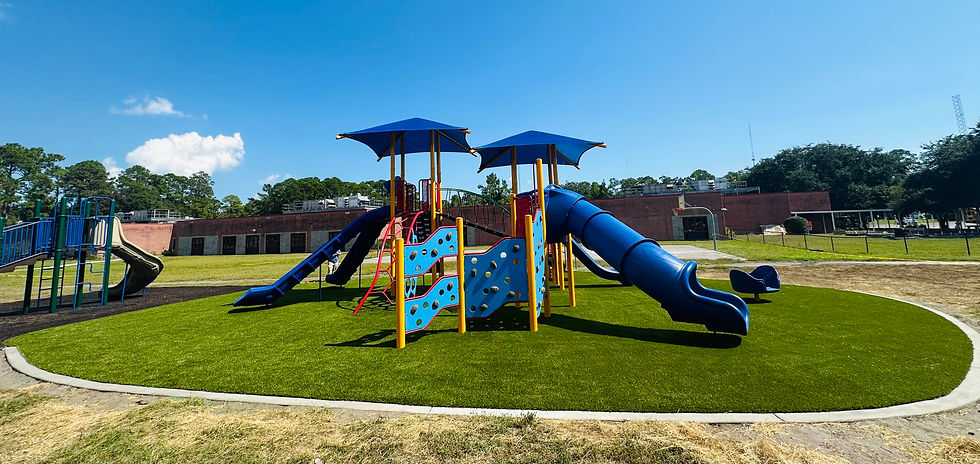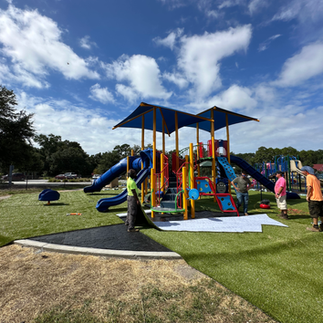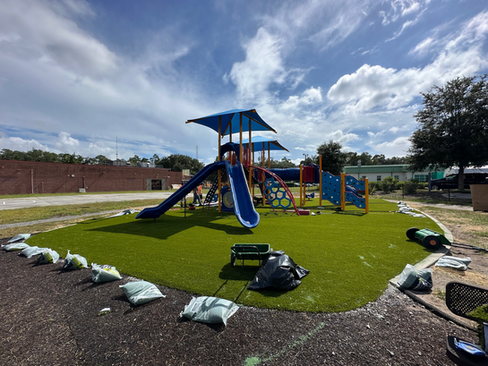Week 4 – Installation Example: Bluffton Elementary School Playground
- Ryan Ellenwood

- Sep 26
- 2 min read
Updated: Oct 2
In this week’s article, I want to conclude our myth-busting series by highlighting a recent installation which exemplifies the previous three articles. We completed this installation at an Elementary School in Bluffton, SC, just last week.

Myth #1: All Synthetic Turf is the Same – MYTH BUSTED IN BLUFFTON!
We installed our patented PlaygroundGrass Ultra for a playground at the elementary school. This variety is unique in that it is engineered for playgrounds – the only one of its kind in the market – specifically with its triple-layer backing, blade construction, antimicrobial and antistatic properties. The triple-layer backing adds cushion and stability, the blade construction withstands high foot traffic while delivering comfort, the antimicrobial addition helps to create a clean playing surface, and the antistatic properties ensure that the turf does not create static interference for children with health devices (hearing aids, heart monitors, etc.).
Myth #2: Synthetic Turf is Easy to Install – MYTH BUSTED IN BLUFFTON!
Our install process for this playground involved the rock aggregate base, plastic lumber perimeter, and safety foam. I want to focus on the safety foam in this paragraph. Federal law requires playgrounds with fall hazards to have a cushioned surface to help mitigate child injuries. Our safety foam is installed for this reason. Thus, the rock aggregate base and safety foam layers had to be at an exact thickness so that the turf itself post-install would be uniform, contoured, and stable. Have fun trying that on your own!
Myth #3: Synthetic Turf Hurts to Touch – MYTH BUSTED IN BLUFFTON!
I have already alluded to it, but the turf blades, infill, turf backing, and safety foam all combine to create a surface that is comfortable, stable, safe, and padded. This particular variety of PlaygroundGrass requires a higher amount of infill, yet we use Silica Sand (hardly an abrasive product) that is held secure in the secondary layer of turf blades underneath the primary layer. We call this the thatch layer, and it also adds an aesthetic realism to the turf.
ForeverLawn conclusively busts all the myths which exist in the marketplace regarding synthetic turf, as exemplified in the project referenced above. Next week, we will begin our second series on the blog: Synthetic Turf Solutions for Common Residential Problems. I will see you next week!














Comments